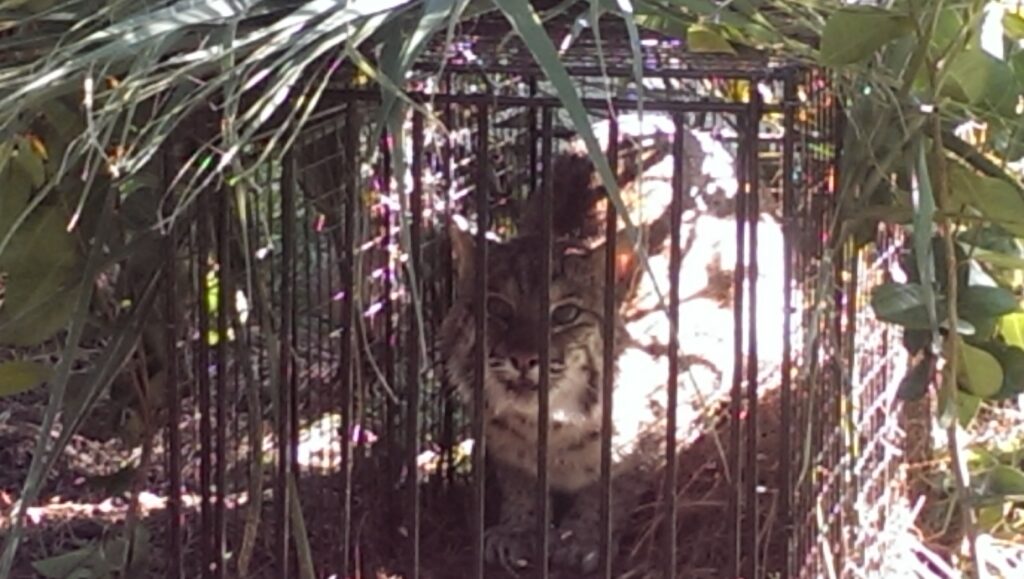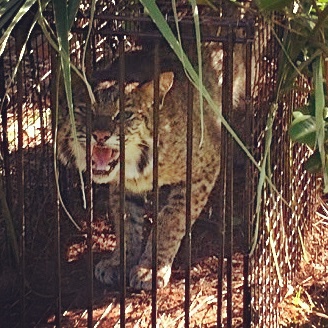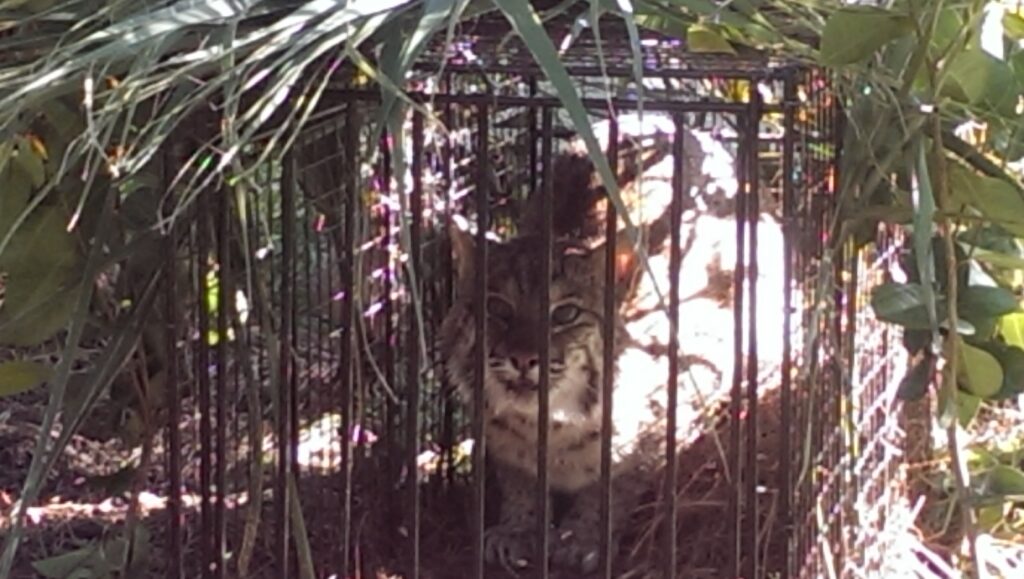
The Bobcat: (Lynx rufus)
Bobcats (lynx rufus) are in the felidae or cat family. They are medium sized cats averaging between 32 to 50 inches long, 15 to 35 pounds, standing about 22 inches tall.
Bobcats color patterns consist of black spots and bars on the legs and the rear. Their faces are flat and wide; that have black lines radiate onto the facial ruff. Their ears are slightly crested, the outside of the ear is black. The bobcats under-parts are white. It’s tail is short that almost appears to be bobbed cut. Most bobcats are an orange-brownish color in the summer months. Although in the winter months, they appear more of a grayish color. Bobcats are found throughout North American including Florida. This has allowed them to adapt to several environments; including neighborhoods. Their preferred habitats that are located in woods, shrubs, swamps and wetlands. They use palmettos and dense shrubs for their dens or as a temporary resting spot. When bobcats are in their natural habitat they can range 8 to 9 square miles; covering their territory slowly and carefully. In neighborhoods and commercial areas, their territorial range dramatically decreases between 1 to 2 square miles.
Bobcats are scavengers and will eat just about anything. Their primary diet consists of squirrels, rabbits, opossum, raccoon, rodents, beaver, peccaries, birds, bats and deer.
Bobcats are mainly nocturnal and excellent hunters, stalking prey with stealth and patience, then capturing their meals with one great leap. They are usually solitary and territorial animals with the exception of the female bobcat, never share their territory with each other. However the male bobcat territories tend to overlap each other. Their territories are established with scent markings and their territory sizes are extremely varied generally 25 to 30 square miles for males and about 5 square miles for the females. Bobcats may have several dens; one is their primary den also called the natal den and the rest are auxiliary dens within their territory. Although most bobcats have their primary den in a cave or rock shelter, they also use hollow log, fallen tree, or any area that is protected. The remaining dens or auxiliary dens are less visited portions of its home range and are often brush piles, rock ledges or stumps, which are also called shelter dens.Female bobcats can breed as early as 1 year, which is usually in the late winter or early spring. They usually breed in August to March; peeking in the months of February and March. Its gestation period lasts approximately 50 to 60 days. Once the kittens are born the mother raises her young alone. The average litter size is 1 to 3 kittens, but they can have up to 6 kittens. The kittens are born with their eyes closed for about 9 to 10 days, having mottled or spotted fur with more distinctive facial marking than the adults. The mother begins to wean her young around the age of 2 months; once they have been taught their hunting skills.
There have been twelve infectious diseases documented in the bobcat. These diseases include rabies, feline distemper and feline leukemia. They also carry parasites that include, tape-worms, round-worms and other common parasites that are associated with their prey.
Some of the damage caused by bobcats are because they are opportunistic predators, feeding on poultry, sheep, goats, house cats, small dogs, exotic birds and other animals. Bobcats can easily kill domesticated or wild turkeys, by climbing into their roosts. In some areas, bobcats can prevent the successful introduction and establishment of wild turkeys or possibly deplete the existing populations.


